For many people, abdominal muscles are a kind of cult, a sign of a trained and beautiful body, the personification of beauty, and the like. And it happens that if you get too carried away with working out your abs, your muscles stop developing, and performing a whole set of abdominal exercises becomes easier than ever. What to do in this case for trained people who have ceased to feel the pleasant sensation of fatigue and burning of the abdominal muscles? We suggest you consider the most difficult exercises for the abdominal muscles, which you will surely like.
1. Fold
This exercise is used less frequently compared to straight crunches and leg raises. And this is justified because the latter are safer and more understandable for beginners. An untrained person will not be able to master a full fold; most likely, the technique will suffer. The difficulty of the exercise lies not in the force that the athlete must apply, but in its instability. The fold requires good stabilization while simultaneously lifting the arms and legs to the top point. Many beginners simply fall back when performing a fold.
When performing a full fold from the top point, as you exhale, your arms and legs should meet simultaneously: your palms should reach towards your toes. In this case, it is important to lift your back completely off the floor and fold it into a fold, like a book. In this position, only the buttocks touch the floor. It is important to tense your abdominal muscles and not perform the exercise jerkily or fall to the floor.
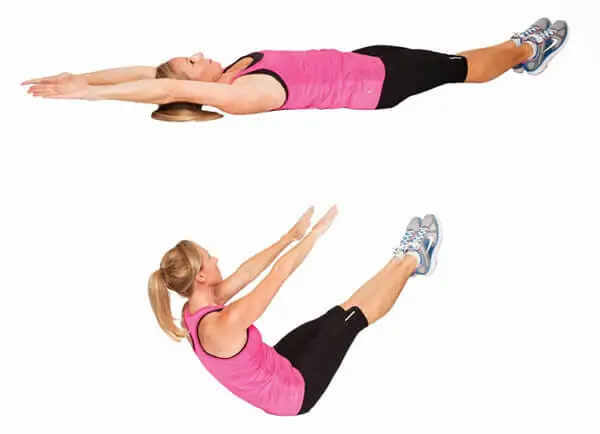
2. Side fold
A variation of the previous exercise aimed at developing the oblique abdominal muscles. The difficulty of the technique is that when lifting the torso to the hips while lying on its side, the load falls on one side, namely the external oblique abdominal muscle. For many, the technique with straight legs turns out to be very difficult, because it involves a minimum of auxiliary muscles. To make the exercise more difficult, you can hold a dumbbell in your hand and hold a ball between your feet.
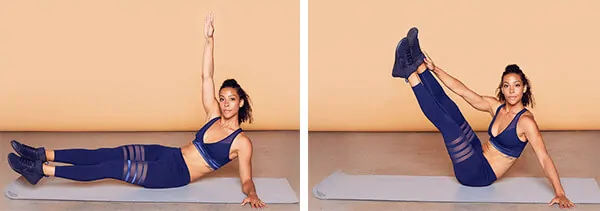
3. Prayer
This exercise was nicknamed “prayer” because of the similarity of the movements to the procedure of serving God. It is often not fully understood even by trained people and is twisted using the back rather than the rectus abdominis muscle. And this is important because the exercise is performed in a crossover, that is, by pulling blocks. Imagine the picture: an athlete performs deadlifts of a certain, usually considerable weight with a rounded back while twisting due to the spine.
To avoid injury, but to load the abdominal muscles as much as possible, perform the first approach with a small weight – 15-20 kg, feel how the movement is carried out by the rectus abdominis muscle. You can perform the option both standing and sitting, the main thing is to twist your body towards your knees due to the efforts of your abdominal muscles. The handle of the block should be held behind your head. When lifting up, your back should remain rounded and not bend backward due to the weight of the blocks.
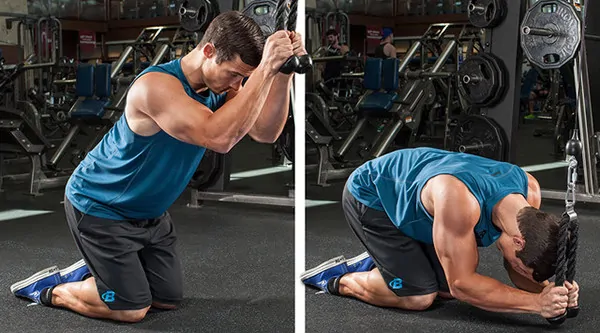
4. Leg raises on parallel bars
One of the most difficult abdominal exercises, but the execution option still plays a big role. A simplified version is to focus on the elbows and the back of the machine, raising the bent legs to the chest. But we will look at the classic version on straight arms with straight leg raises. This technique requires additional strength in the hands and well-trained ligaments. It is important not to sag in the shoulders, but to keep the neck elongated.
When performing this option, it is important not to swing like a pendulum. Without fixing your back, it will be much more difficult to lift straight legs, so use exclusively your abdominal muscles so that your hips are horizontal to the floor.
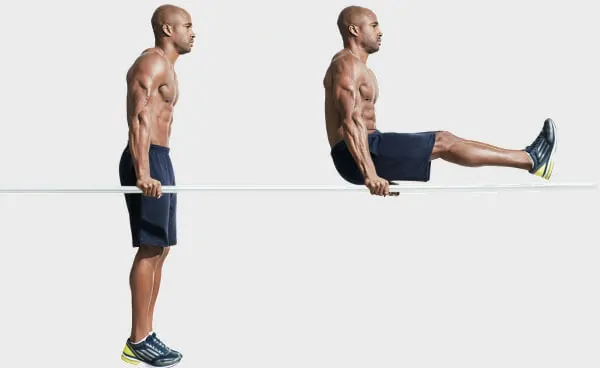
5. TRX fold
This exercise is difficult because it requires the involvement of both the main external muscle groups of the body and the deep stabilizer muscles, allowing you to keep the body in the correct position. It can be made more difficult by the fact that when performing a fold, the legs will remain straight, and when the hips are brought towards the body, the pelvis will rise high. This requires good preparation since the arms and spinal stabilizers will also take most of the load.
An important condition when performing a fold is not to sag in the lower back in the lower position, but to keep your back and knees as straight as possible at the top point.
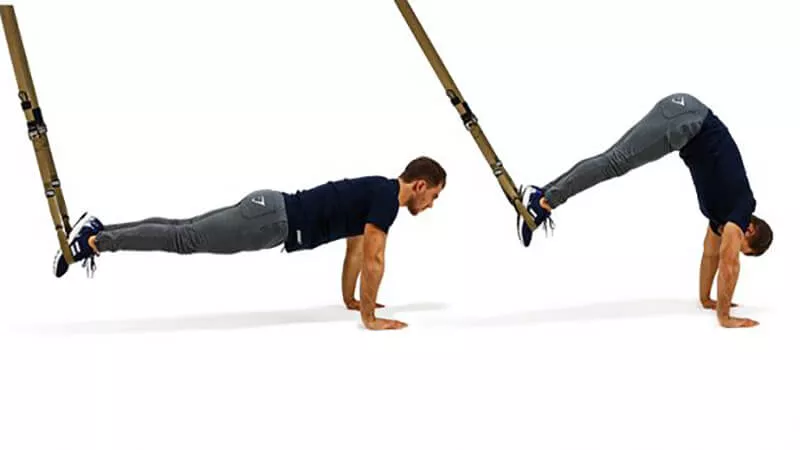
6. Oblique crunches in TRX
The modification of the previous exercise is difficult in that the technique additionally includes oblique twists, in which the knees extend to the side relative to the body. In addition to the muscles that hold the whole body in the plank, the oblique abdominal muscles are also involved here. Twisting is performed alternately in each direction. As you pull your hips toward your torso, lift your pelvis, but do the crunch using your abdominal muscles, not your legs.
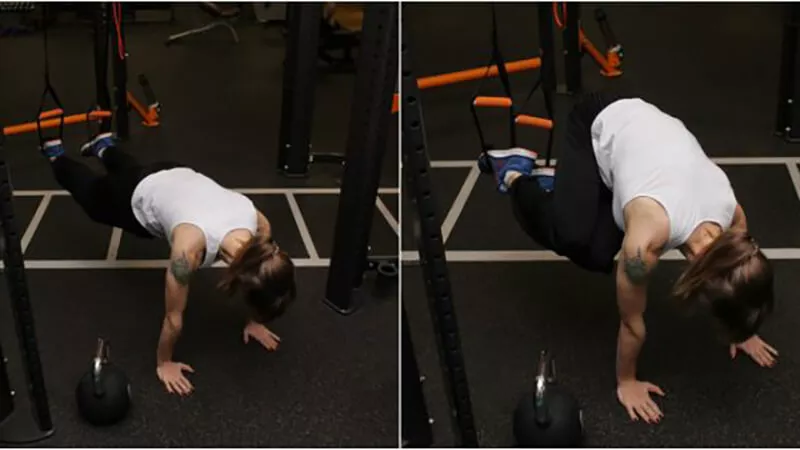
7. Hanging Leg Raise
Perhaps the most difficult and common exercise in functional training. It improves both muscle strength and endurance. The main thing is not to sway when lifting your legs. When performing straight arm hangs, lift your straight legs horizontally to the floor. If you are especially prepared, you can raise your socks to your palms, performing something like a fold.
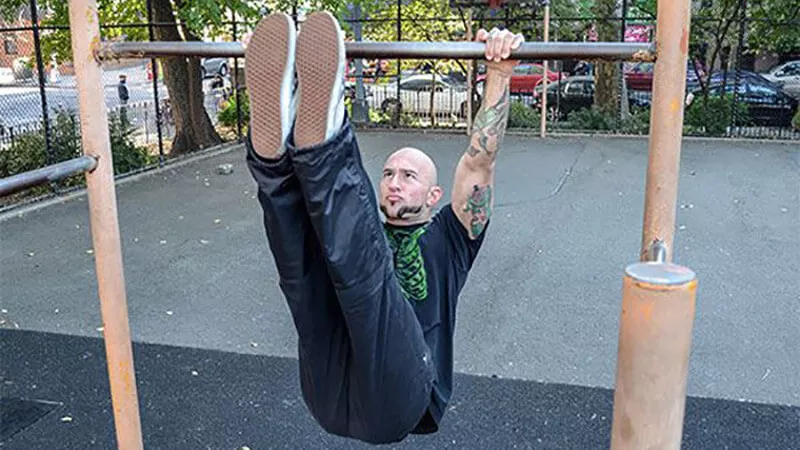
8. Ab roller exercise
Working with the “wheel” requires good physical training of all muscles and not just the abs. Its complexity is that when the roller is pushed forward strongly, the muscles and ligaments of the upper extremities are subjected to heavy load. The lower the body falls relative to the floor level, the more difficult it is to return to its original position. To make it more difficult, the exercise can be performed with straight legs.

It doesn’t matter what exercise you do, you can make absolutely each one more difficult by adding additional weights and performing more complex techniques that require better stabilization. Simple straight crunches can also be made more effective by holding a small weight plate at forehead level. Of course, you can also do wall bars upside down, but the effectiveness of the exercise should lie not just in sophisticated technique, but also in being as safe as possible.

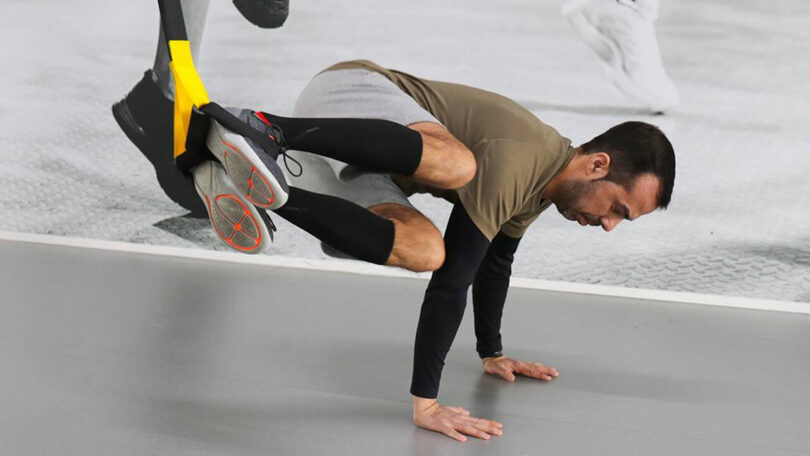
Leave a Comment